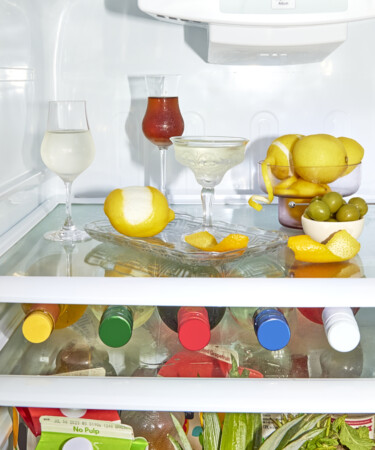Vermouth has seen quite a renaissance in recent years, evolving from that forgotten dusty bottle you might use to cook with to a chic, sought-after staple at home and at the bar. Many new brands of craft vermouth have popped up, and even bartenders are having a go at making more artisanal versions of the product. Vermouth’s popularity can likely be attributed to its ties with of-the-moment trends including the U.S.’s fascination with Italian aperitivo culture and low-ABV beverages, but being associated with steadfast booze bombs like Martinis and Negronis probably hasn’t hurt its case, either.
But for all its buzz, vermouth still suffers from a case of mistaken identity. It’s talked about like a spirit, used in cocktails like a spirit, and is frequently kept on bar carts and back bars as a spirit. But when it comes down to it, vermouth isn’t a spirit at all, and that means there’s a chance you might be storing it — and enjoying it — incorrectly.
Vermouth can be made in several styles, but at its core, it’s a fortified wine (a wine with an added neutral spirit) infused with a medley of herbs and spices. This means its ABV usually falls around 16 to 18 percent. While that is higher than most wines you will find on the market, it is markedly lower than the typical spirit, which will usually come in at about 40 percent alcohol. This high alcohol percentage is what generally allows spirits to survive being kept out at room temperature after opening. Without that high proof, vermouth is more likely to go bad if it is left sitting out on a bar for too long. Additionally, vermouth can have very delicate aromas similar to those of typical wine, which are better preserved in the fridge.
Vermouth can typically be kept in the fridge for about a month before it loses its luster, so it’s best to toss that old bottle of vermouth you’ve had crammed into the back corner of your fridge behind the jam jars for longer than you can remember, and start keeping tabs on how long your current bottle of vermouth has been open. If you don’t use a lot of vermouth, try to buy half-bottles so that you can always have a fresh option on hand.
So, whether you’re crafting the perfect Manhattan, enjoying an Americano at aperitivo hour, or making a light and spritzy vermouth and soda to enjoy outside, make sure you put that bottle of vermouth in the fridge after using it.
